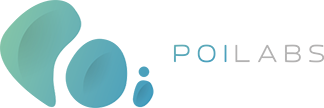The Cleveland Cavaliers have given fans plenty of reasons to watch them this season, beginning with the much-celebrated return of a certain four-time NBA MVP. But just in case you needed an extra push, the team’s mobile app has provided quite a few — from welcome messages to merchandise offers, exclusive content, giveaways and even alerts for anyone who is in proximity to sellers of 50/50 raffle tickets at Quicken Loans Arena.
The latter step is a unique approach the Cavs are taking as they employ beacon technology, a proximity-based form of mobile engagement that is becoming a must for professional sports franchises that are waging a constant battle against the at-home viewing experience.
Prior to the 2014-15 season, the Cavs partnered with Gimbal Inc. and Yinzcam Inc. to install 60 Gimbal beacons throughout The Q. The devices are allowing teams such as the Cavs to offer mobile experiences to fans as soon as they enter — and, as the technology develops, when they’re elsewhere.
“We’re stressing that our beacon platform is really content awareness,” said Mike Conley, the Cavs’ vice president of digital.
‘Barrier for entry’
Before the beacons can produce a push notification or a fan can listen to a welcome message from Dan Gilbert, there is a short process that must take place.
The first — downloading the Cavs’ new app launched Oct. 29 — is pretty simple. More than 220,000 people already have done so, Conley said. To benefit from the beacon technology, fans have to allow the Cavs’ app to access their location, give them push notifications and opt in to receive exclusive content.
The beaconing features only work for iOS devices, but Conley said Android users can still receive geo-targeted messaging that is powered via GPS, and Android’s software is soon expected to be compatible with Gimbal’s technology at The Q.
A cool function the Cavs have implemented is having 10 to 15 workers wear Gimbal’s Series 10 beacons, which are a little larger than a quarter, on their aprons as they sell 50/50 tickets during a game. Anyone within proximity of the seller, assuming they’ve opted in, is alerted to a raffle being nearby.
Conley said the Cavs have found that “the highest engagement of beacon messaging comes from the mobile beacons,” and Brian Dunphy, Gimbal’s senior vice president of business development and partner relations, added the proximity beacons that are worn by workers at The Q have produced an increase in 50/50 sales.
“The Cavs have invested in the fan experience, their investment in the mobile app is a key way of keeping that engagement with the fan and giving them surprise and delight moments in and outside the arena,” Dunphy said.
Those opportunities include 1976 Miracle of Richfield video highlights for fans who are close to The Q’s display of the original hardwood court from the old coliseum, and amusing videos pushed to fans in the upper-level Loudville area reminding them to be just that.
More to come
Conley said an additional 50 beacons will soon “be rolled out in phases” at The Q.
Once more fans are using the Cavs’ app at The Q, the team will start to give a heads-up on shorter lines at certain gates, and even for those waiting at concession areas. Dunphy said first experiment with a “line busting” feature during Miami Dolphins games last season was “well received.” It’s about getting useful information to the fans.
The Cavs also plan to use beacons for out-of-arena experiences, such as scavenger hunts, sweepstakes and promotional opportunities that are aligned with corporate partners.
Conley said the franchise is in the “pilot” phase of a feature that allows fans to order food and drinks on their mobile devices, and have them delivered to their seats. The Cavs are testing the technology with a small group of season-ticket holders, and hope to expand the service to more fans in the coming months.
The team, as Conley says, is using its app “as a fan remote control.”
